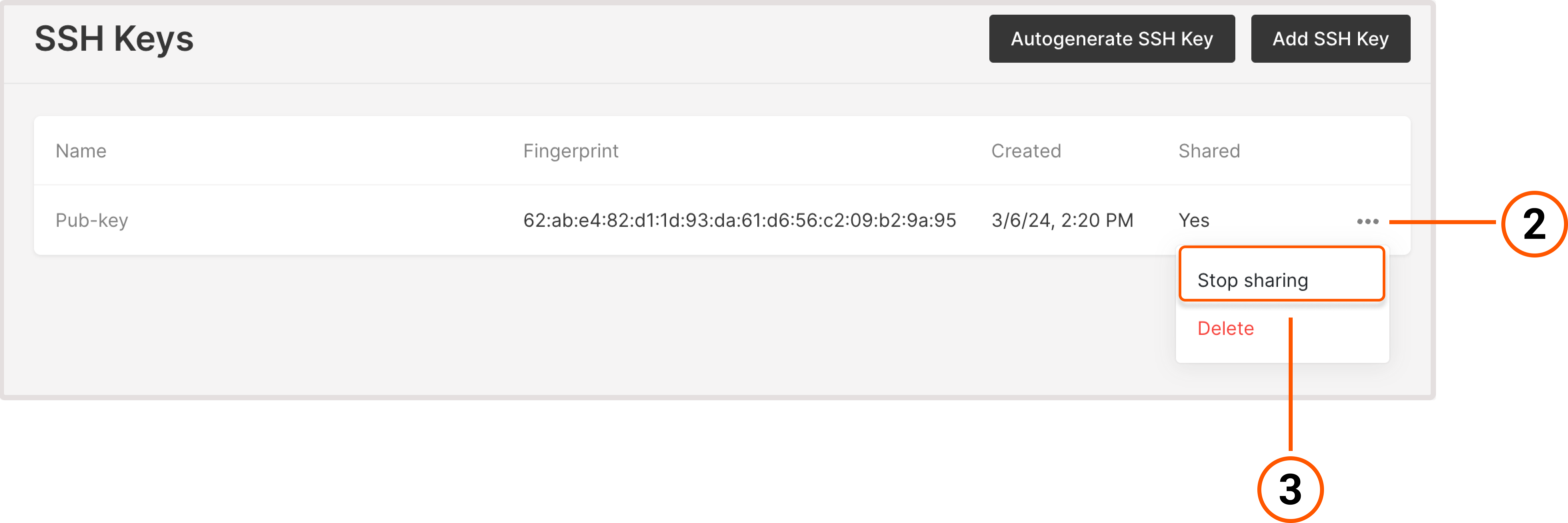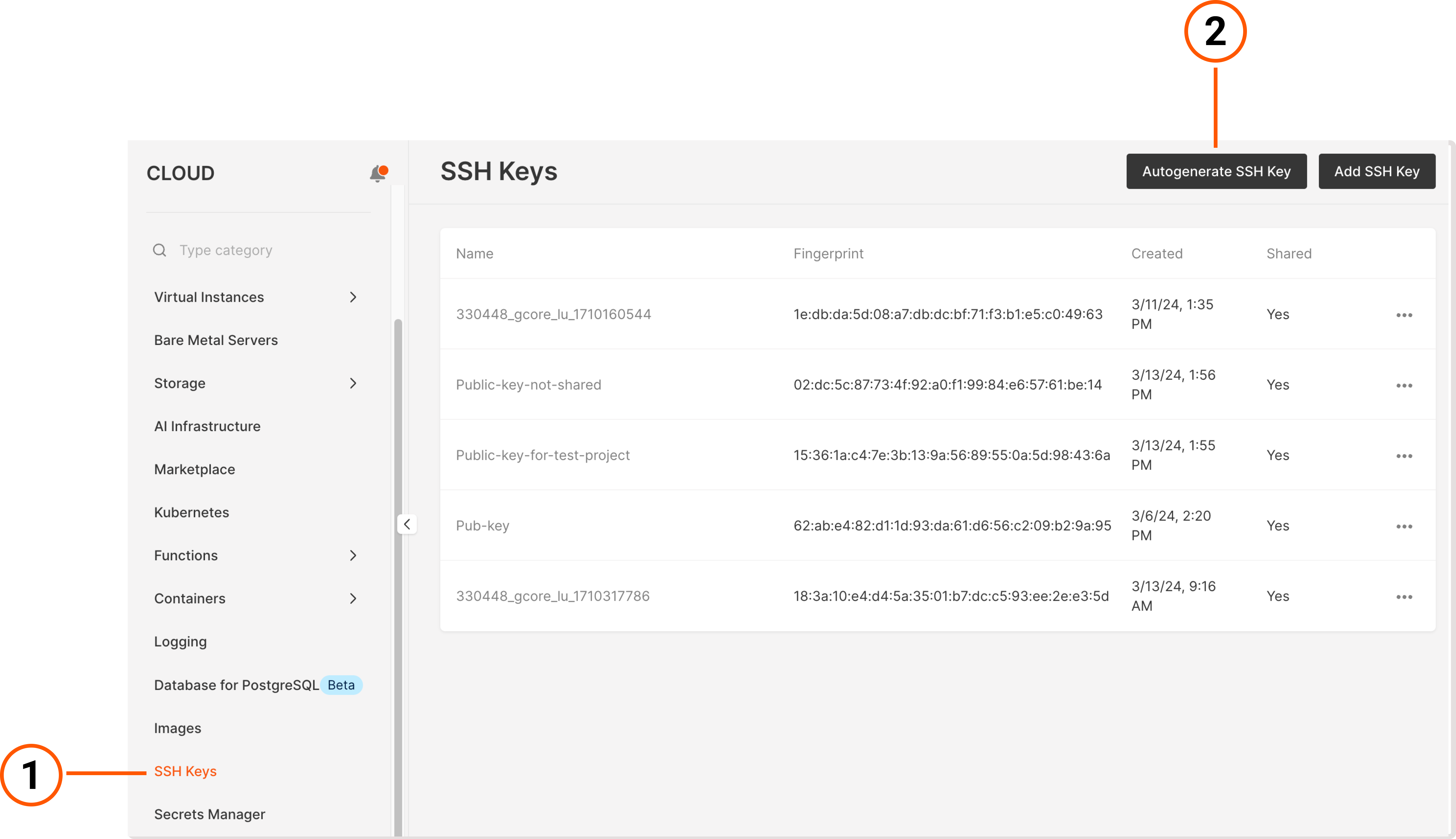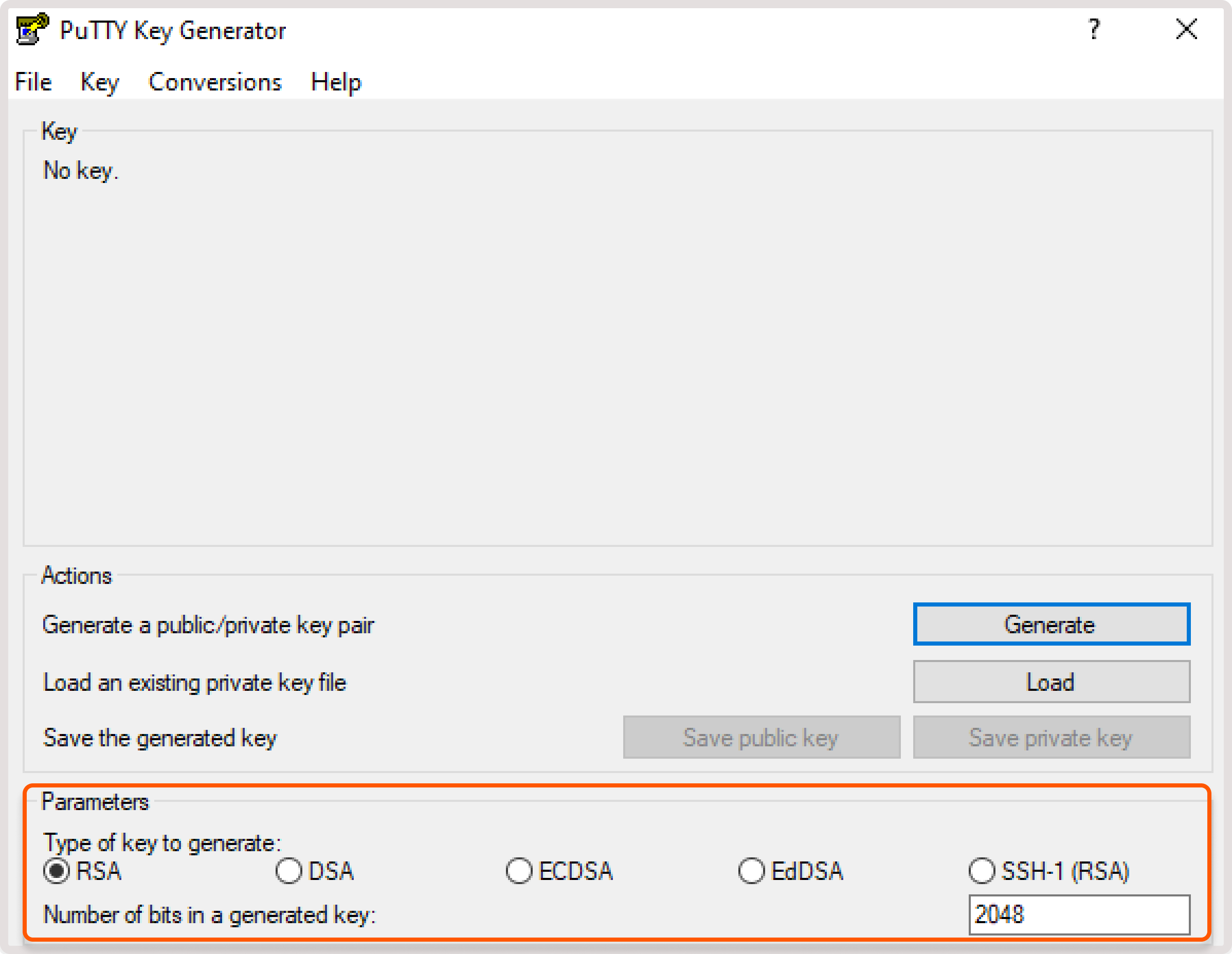Generate SSH keys
You can generate SSH keys in different ways:Generate SSH keys in the customer portal
You can create SSH keys when creating a VM or generate them separately in the “SSH Keys” section. After you generate the keys, a public key will be added to the system and appear in the “SSH Keys” section, along with any other added or created keys. A private key will be downloaded to your local storage.InfoWhen naming a public key, consider that the name can contain only Latin characters, underscores, spaces, and dots. Its length must be between 3 and 63 characters.
- Generate an SSH key when creating a VM
- Generate an SSH key in the SSH Keys section
When creating a Virtual Machine, in Step 8, you’ll be asked to choose one of the following options in the “SSH key” section:

- Select SSH key : Add a key that’s already stored in the Gcore Customer Portal by selecting it from the dropdown list.
- Add a new SSH key : Add an existing key generated via CLI tools or SSH client.
- Generate an SSH key : Create a new key.


Generate SSH keys via CLI tools or SSH clients
- Terminal or Command Prompt
- Windows Subsystem for Linux (WSL)
- Tab Title
Follow these instructions to generate SSH keys on Linux, macOS, or Windows 10/11 devices:1. Open Terminal (Linux, macOS) or Command Prompt (cmd.exe on Windows).2. Run the following command to generate a key pair:You’ll be asked to enter the file where the keys should be saved. You can specify a custom location (for example,
.ssh/), or press Enter to save the keys to the default directory. The default directory is ~/. for Linux/macOS and C:\Users\\ for Windows.4. Press Enter.5. You’ll be asked to enter a password for the key as an additional security step. You can either create a password and enter it every time you connect via SSH or leave the field empty and press Enter to create the key without a password.6. Confirm the password by entering it again, or leave the field empty and press Enter. You can find your key in the default directory or in the custom location you’ve specified during the key creation.7. The public key will be saved in the .pub file. You need to add this public key to a VM as described in the Add a public SSH key to the Customer Portal section.Add a public SSH key to the customer portal
If you didn’t generate your SSH key via the Gcore Customer Portal, you need to add your public key there. To add the key: 1. In the Gcore Customer Portal, go to Cloud > SSH keys. 2. Select Add SSH key.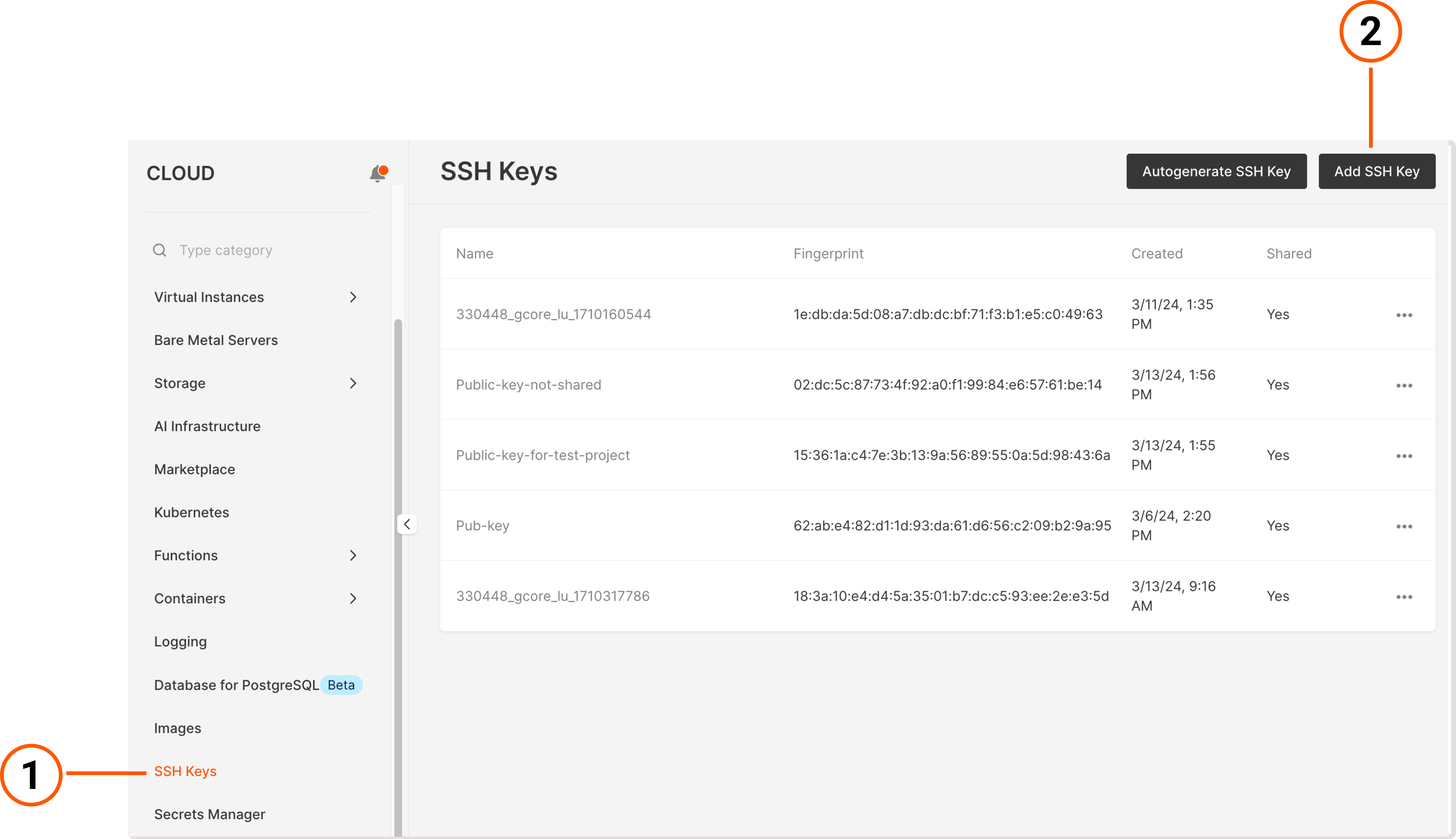

InfoAfter you add a public key, it’ll be automatically shared with all users who belong to the same project. To change the key’s visibility, follow the instructions from this section: Stop sharing SSH keys
Manage SSH keys in the customer portal
You can delete a public SSH key from the Gcore Customer Portal, share the key with other users in the same project, or make the key only visible to you.Delete SSH keys
Only the user who created an SSH key or added the public key to the Gcore Customer Portal can delete that key. To delete the key: 1. In the Gcore Customer Portal, go to Cloud > SSH keys.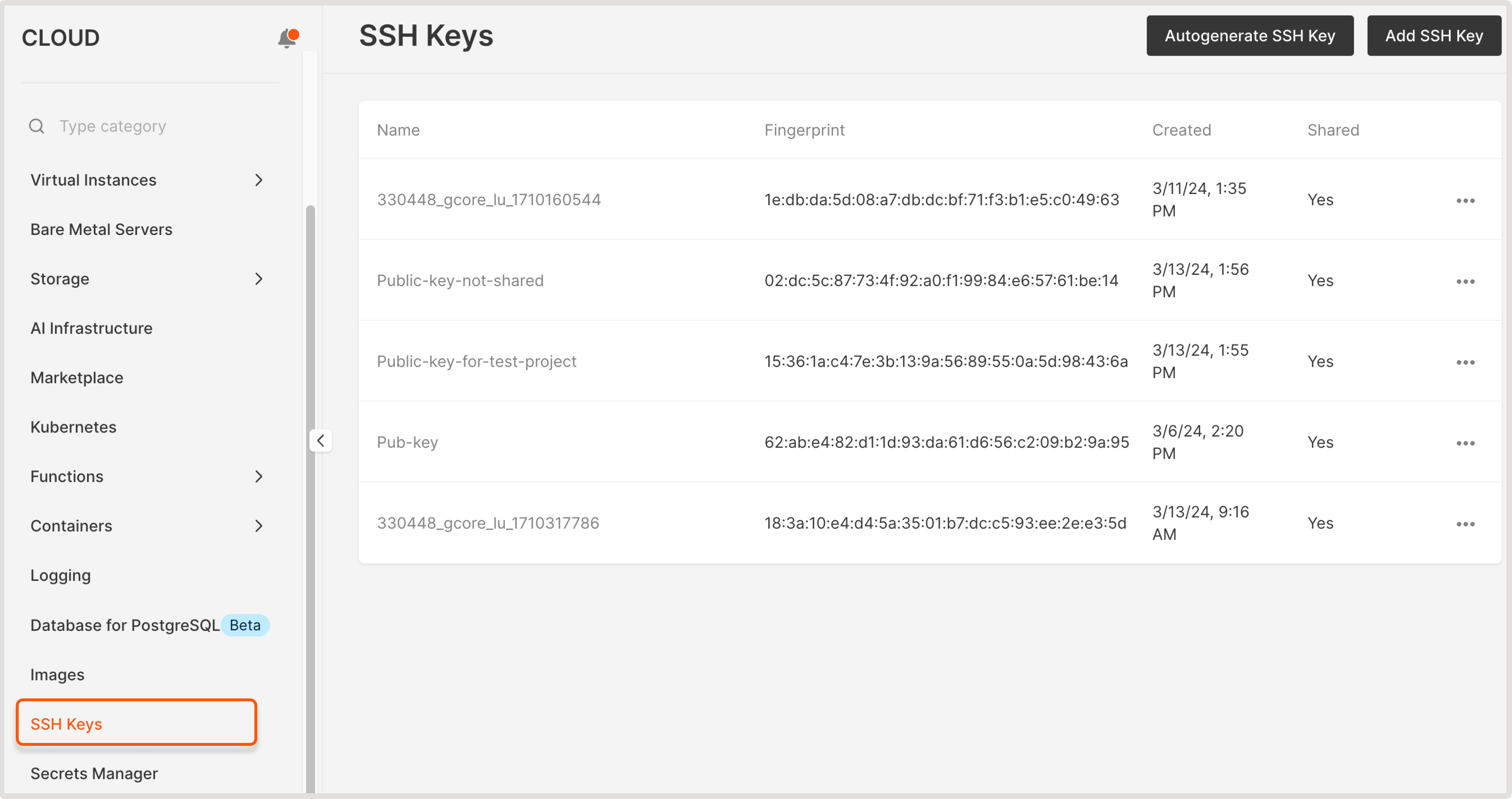
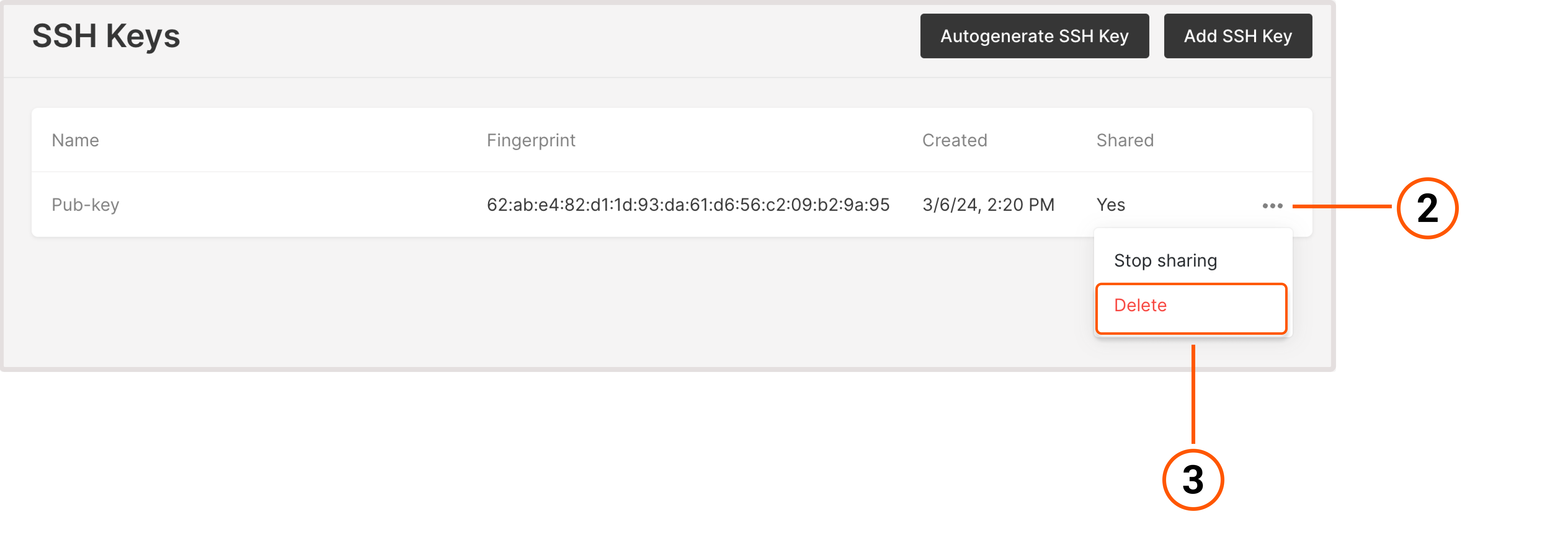
Stop sharing SSH keys
After you add or generate an SSH key in the Customer Portal, the public key is automatically shared with all users in the same project. To stop sharing the key and only make it visible to you: 1. In the Gcore Customer Portal, go to Cloud > SSH keys.
